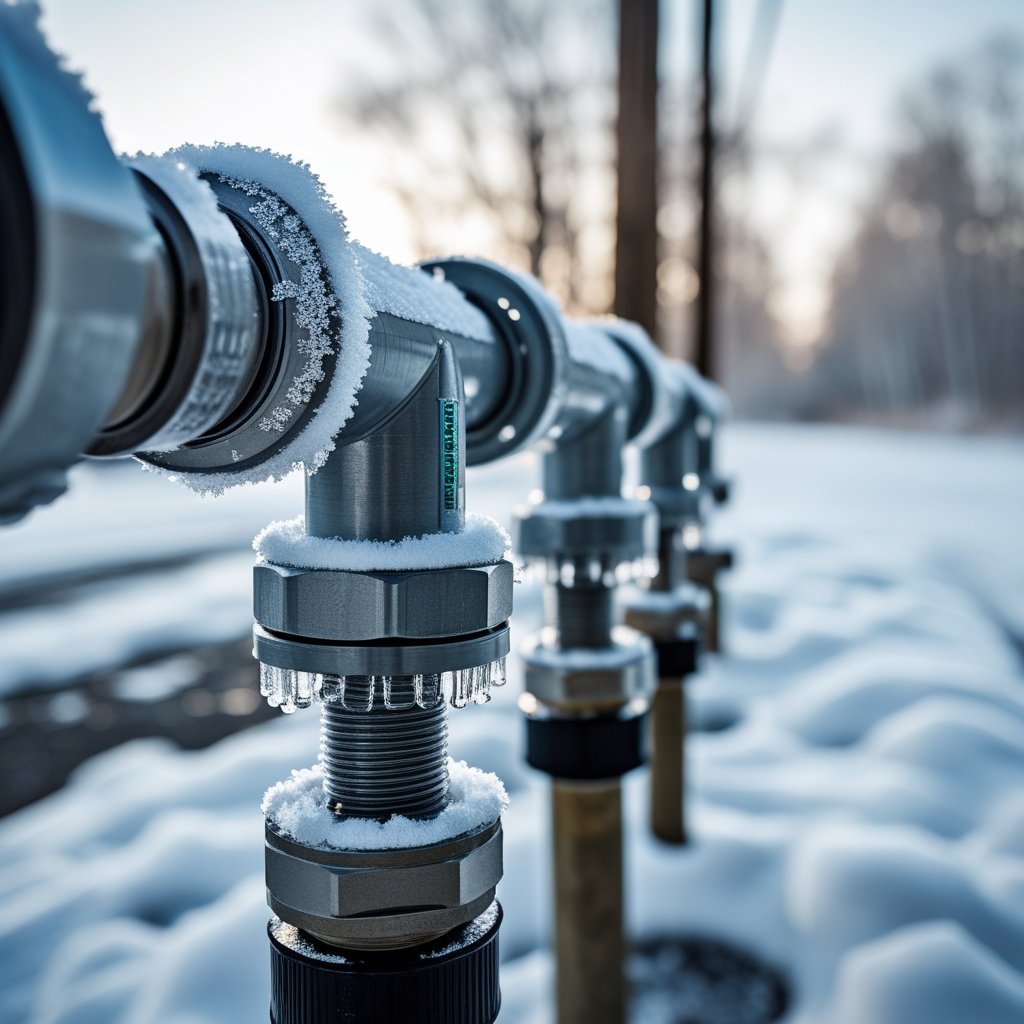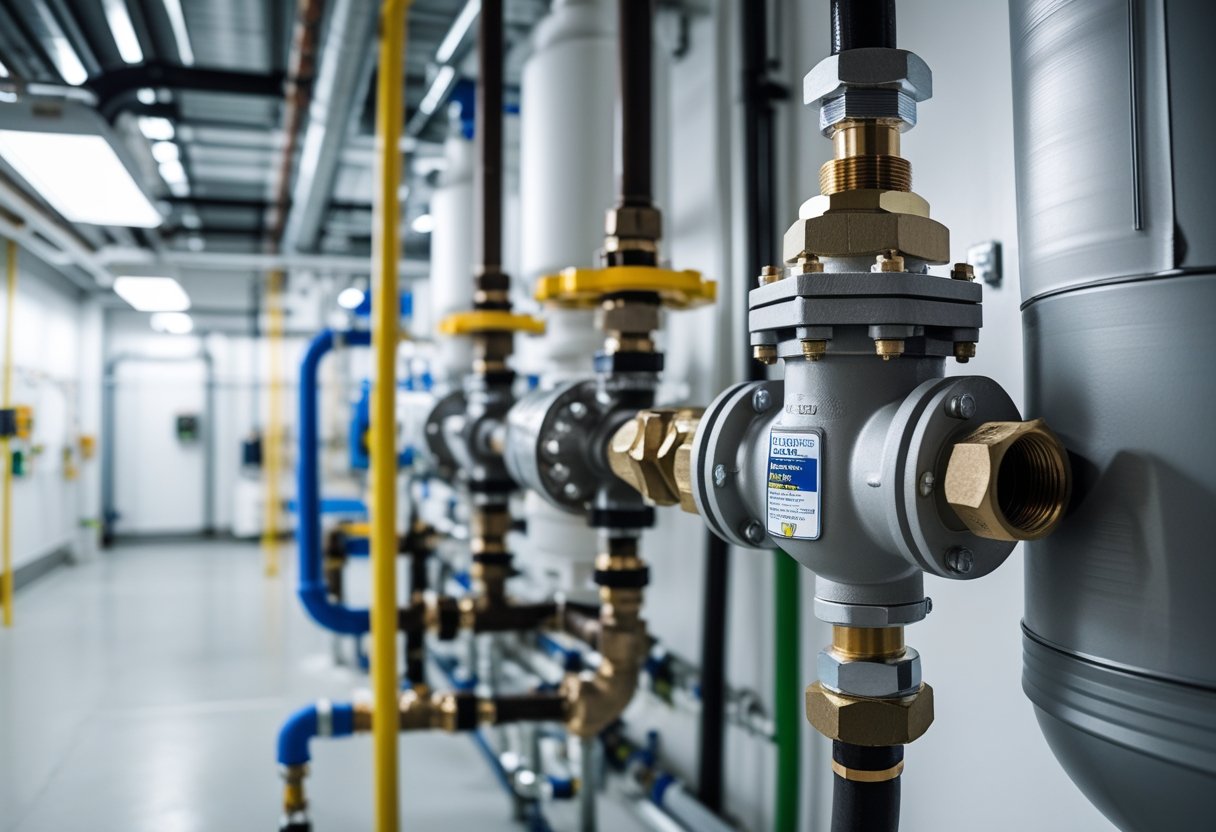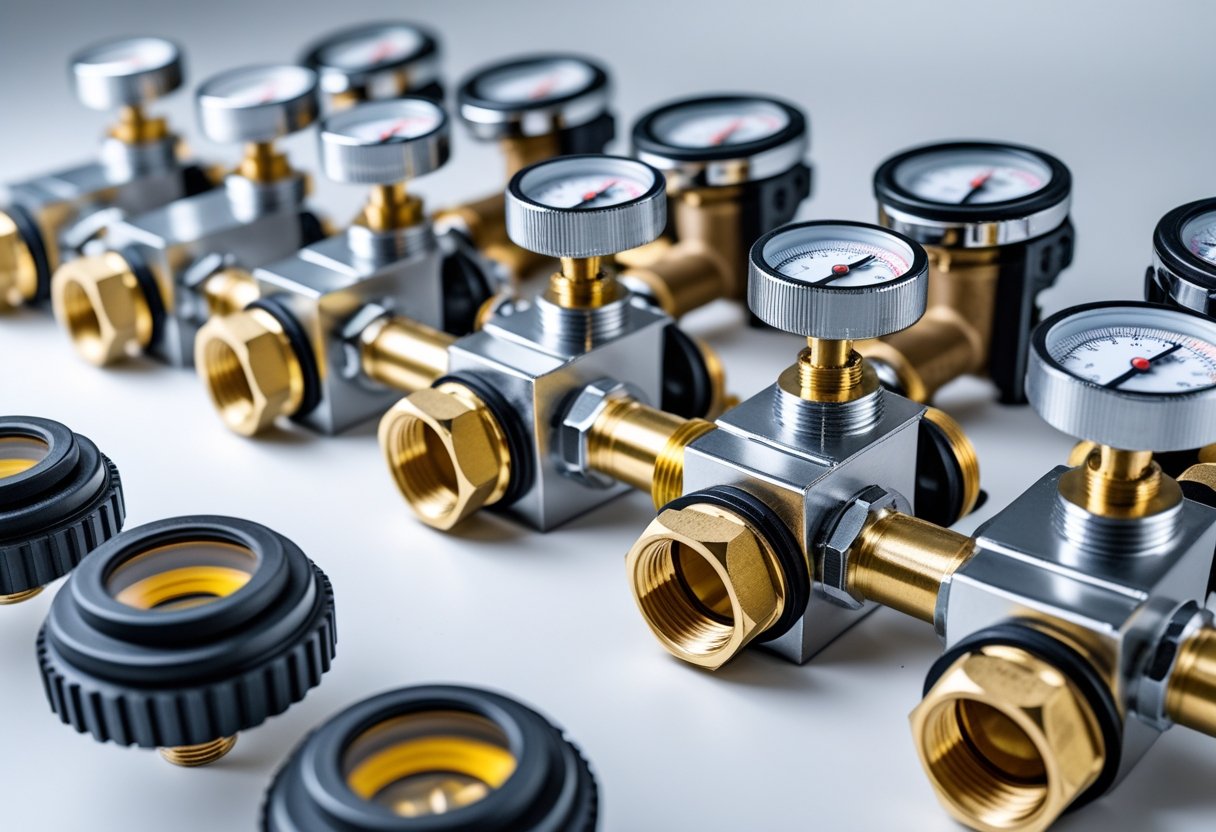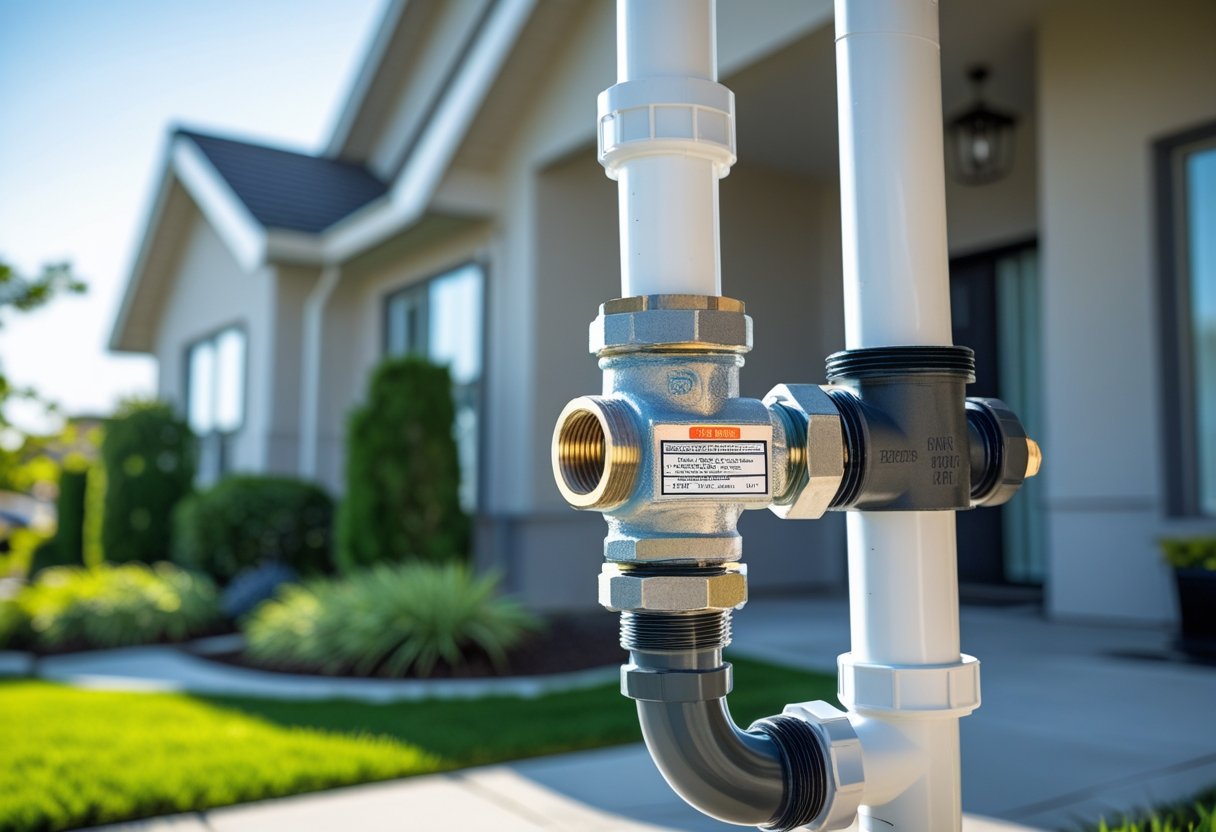If you live somewhere that gets cold in winter, protecting your backflow preventer matters—a lot. Backflow preventers absolutely need winter protection to avoid freezing damage that can lead to leaks, busted parts, or even contamination of your water. When the water inside freezes, it expands. That’s when things crack, break, and suddenly you’re dealing with repairs, or worse, dirty water.
So, what can you actually do? Insulate the device or drain it before the freeze sets in. Those are the basics. If you do it right, your irrigation or plumbing system should keep running, no drama, all winter.
At Pacific Backflow, we help folks in San Diego County keep their backflow systems safe, even when it gets cold (yes, it happens). Whether it’s testing, repairs, or just some straightforward advice on winterizing, our team’s got your back.
What Is a Backflow Preventer?
A backflow preventer is a plumbing gadget that stops dirty or contaminated water from sneaking back into your clean water supply. It keeps your water safe by making sure water only flows in one direction.
It’s worth knowing how these devices work and what types exist so you can actually protect your home or business.
How Backflow Preventers Work
Backflow preventers use valves that open and close depending on water pressure. If pressure drops in your supply line, the valves slam shut to keep contaminated water out.
If there’s a sudden drop in pressure—maybe a main break or a ton of water use nearby—the device steps in and blocks anything nasty from getting into your pipes. That means chemicals, bacteria, dirt… none of it gets mixed with your drinking water.
Some models come with test ports so technicians can check if everything’s working.
Types of Backflow Preventers
There are a few main types, each for different situations:
- Air Gap: Just a physical gap between the water and anything that could contaminate it. No moving parts. You’ll see these in dishwashers or sinks.
- Double Check Valve Assembly (DCVA): Two valves for extra backup. Good for low-risk setups.
- Reduced Pressure Zone (RPZ): Has a relief valve to dump pressure and stop backflow in high-risk spots.
- Pressure Vacuum Breaker (PVB): Lets air in when pressure drops, which keeps water from reversing.
Picking the right one depends on your risk level and whatever the local plumbing code says. If you’re not sure, Pacific Backflow in San Diego can test, repair, or install the right thing for you.
Why Winter Protection Matters for Backflow Preventers
Cold weather and backflow preventers? Not a great combo. If your device freezes, it might stop working or break, which can mean expensive fixes or water contamination.
Risks of Freezing Temperatures
When water freezes inside your backflow preventer, it expands—and that’s what cracks or breaks the device. Most of these are outside, so they’re right in the line of fire when it comes to cold air and wind.
If you don’t insulate or drain the device, ice can build up fast. Even a quick cold snap can do damage. Pipes connected to the preventer can burst if the water inside freezes.
Foam covers or heating cables can help. Draining the system before winter is another solid move. You don’t need to rip out the whole device—just keep it safe from the cold.
Consequences of Damage
If your backflow preventer breaks from freezing, water could leak or flow the wrong way, putting your clean water at risk. That’s a health hazard, and it can cause water quality issues for your whole property.
Repairs aren’t cheap, and insurance may not help if you skipped basic protection.
Signs Your Backflow Preventer Needs Winter Protection
If winter gets cold where you live, your backflow preventer probably needs some extra attention. When temps drop, parts can freeze and break. Where the device is installed—indoors or outside—matters a lot.
Climate and Local Weather
If your area regularly sees freezing temps, you’ll want to keep an eye on your backflow preventer. Cold weather can freeze water inside, leading to cracks or busted parts.
Long freezes make things worse, but even one cold night can do damage if your device isn’t protected. Rain, snow, and wind chill just add to the risk.
Even in places with mild winters, it’s worth prepping for the occasional cold snap. Insulation or a cover can save you from a pricey repair bill.
Outdoor Vs. Indoor Installations
Location is everything. If your backflow preventer’s inside a heated space—like a basement—you probably don’t need to worry much about freezing.
Outside is a different story. Outdoor preventers are exposed and way more likely to freeze. They need insulation, draining, or covers in winter to keep water from freezing inside.
Some outdoor units are in pits or boxes, but cold air still gets in. Heat tape or insulated blankets can help there.
Getting ready before winter hits can save you a lot of headaches (and money) down the line.
Effective Methods for Winterizing Backflow Preventers
To keep your backflow preventer safe from freezing, you’ve got two main options: insulate it or drain it. Both help prevent damage and keep your system running.
Insulation Options
If your preventer is outside, insulation is a must. Foam pipe sleeves, heat tape, or covers made for backflow devices all work. Wrap the device and any exposed pipes completely to block out the cold.
Pick weatherproof insulation that can handle getting wet. Check it now and then for rips or damp spots—soggy insulation won’t help much. For extra peace of mind, you could build a small box around the device to block wind.
Insulation goes a long way toward stopping winter damage.
Draining Procedures
Another way to winterize is to drain all water from the preventer. Shut off the water supply, then open the drain valves and let everything out.
If there are low spots or chambers inside, use compressed air to blow out the last drops. Leftover water can freeze and wreck the device.
Follow your model’s instructions for draining. Draining is especially important if you won’t use the system all winter. Even in San Diego, Pacific Backflow recommends it—cold snaps can catch anyone off guard.
Maintenance Tips for Year-Round Backflow Device Care
Taking care of your backflow preventer year-round pays off. Regular checks and professional servicing keep things running, no matter the season.
Routine Inspections
Give your backflow preventer a once-over at least once a year. Look for leaks, cracks, or any signs it’s wearing out. Make sure it drains like it should, especially before winter.
Insulate pipes around the device if you get freezes in your area. Clear away leaves or debris that could block valves.
Heating cables can help during deep freezes. If you spot something odd, call in a pro before it turns into a big problem.
Professional Servicing
Have a certified technician check your backflow preventer once a year. They’ll test it to make sure it meets local water safety codes and works as it should.
If it fails, the pros can fix or replace whatever’s broken. They’ll also clean out debris and swap out worn parts.
Pacific Backflow handles testing and repairs in San Diego County. They’ll even file test reports for you, so you stay compliant without extra paperwork.
Common Mistakes to Avoid When Protecting Backflow Preventers
One big mistake: not insulating your backflow preventer well enough. If you only cover parts or skip the drain valves, it can still freeze. Make sure you prep all pipes and valves.
Another common slip-up is skipping annual inspections and tests. These devices need regular checkups to catch problems early. Miss those, and you risk leaks or freezing damage.
Lots of people also forget to drain the device before winter. Water left inside can freeze and crack the preventer. Draining it right helps avoid expensive repairs.
Don’t use flimsy or non-weatherproof insulation. Thin covers or household insulation just don’t cut it in freezing temps. Go for something durable and secure it well.
Some folks also overlook vandalism or tampering risks in winter. A protective cage can help keep your backflow preventer safe from theft or damage.
If you’re not sure what to do, Pacific Backflow offers winter protection and testing in San Diego County. Their team can help you dodge these common mistakes and keep your water safe.
Understanding Local Codes and Regulations
With backflow preventers, local codes and regulations matter—a lot. These rules keep your water supply clean and safe. You’ll want to know what your city or county requires for installing, testing, and maintaining your device.
Most places require annual backflow testing. If your device fails, you’ve got to fix or replace it quickly to avoid fines or losing water service. Some areas also have rules about protecting your device from freezing or vandalism.
Check your local code for:
- Where backflow preventers are required (homes, businesses, industrial sites)
- How often you need to test and maintain them
- Who’s allowed to do the work
- Winter and security protection requirements
Rules can vary, so it’s smart to talk to a company like Pacific Backflow in San Diego County. They’ll make sure you stay compliant and offer all the services you need.
Following the rules keeps your water safe and saves you from headaches and extra costs. Always double-check with your water authority or a pro before making changes to your backflow preventer.
Choosing the Right Winter Protection Solution
So, you’re staring down another winter and wondering how to keep your backflow preventer from freezing up. Picking the right protection really matters—something that fits snugly and actually shields your device from those cold snaps.
Some options on the table:
- Pipe insulation sleeves
- Heating cables or tape
- Custom-fitted protective cages
Insulation sleeves? Super easy to wrap around and block some of that icy air. Heating cables step things up, especially if your area gets brutally cold—think of them as a little electric blanket for your pipes.
Custom cages do more than just keep the cold out. They also fend off thieves and random damage. Pacific Backflow, for example, makes tough cages that fit your specific device. It’s a bit of extra peace of mind, honestly.
Where your preventer sits makes a big difference, too. If it’s outside and exposed, you’ll probably want thicker insulation or even heating. Indoors or in a milder spot? You might get by with less.
Don’t just set it and forget it, though. Take a look now and then during the winter—catching a torn sleeve or a loose cable early can save you a headache. If you’re scratching your head about what to pick, Pacific Backflow’s folks can walk you through the options and handle the install.
Skipping winter protection? That’s just asking for frozen pipes and expensive repairs. A little prep now keeps your water system humming along all season.
Frequently Asked Questions
Winter protection for your backflow preventer means things like shutting off water, draining it out, and adding insulation. It helps to check your setup every so often and know when to bring in a pro if you spot trouble.
What steps should I take to winterize my backflow prevention device?
First, shut off the main water supply to the preventer. Drain all water from the device so nothing freezes inside.
Once it’s empty, cover or insulate the preventer to block out the cold. Not sure what works? Pacific Backflow can set you up with custom solutions.
Can freezing temperatures damage my backflow preventer?
Absolutely. If water’s left inside, it can freeze, crack parts, and break things. That kind of damage often leads to leaks or total system failure—and those repairs? They’re not cheap. (More info here.)
Are insulation blankets effective for protecting backflow preventers in winter?
They really are. Insulation blankets trap heat and keep the device warmer—plus, they’re affordable and easy to use. Just double-check that it fits right and covers everything. (Here’s how they help.)
Do I need to drain my backflow preventer before the first frost?
Yes, you do. Draining gets rid of water that could freeze and wreck the device. Make sure you clear out the valves and pipes, too.
How often should I check my backflow preventer during the winter months?
Try to check it at least once a month. Look for leaks, damaged insulation, or any hint of freezing. The more often you peek at it, the sooner you’ll catch anything weird.
Is it necessary to hire a professional to winterize my backflow prevention system?
If you’re not really sure about handling it yourself, it’s probably a good idea to call in a pro. Folks at places like Pacific Backflow know their stuff—they’ve got the right tools and experience to get it done safely.
Plus, they’ll check that your device lines up with local rules, and if something’s off, they can usually fix it on the spot.











